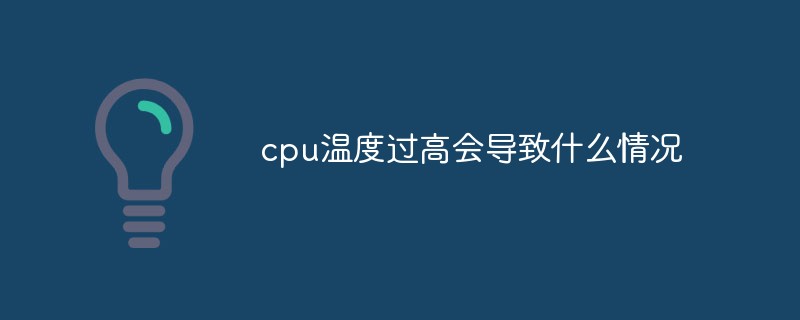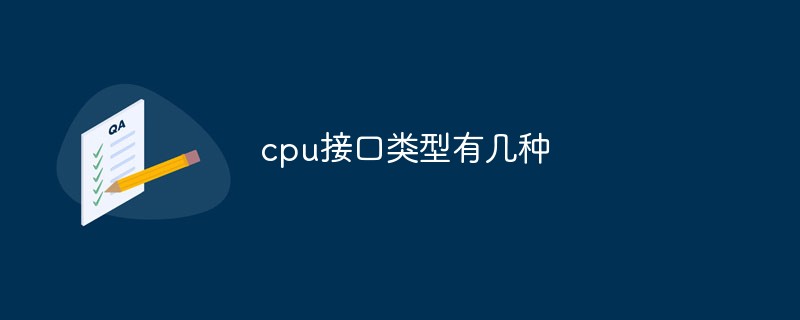The central processing unit (CPU) is mainly composed of a controller and arithmetic unit. The central processing unit is one of the main devices of an electronic computer. Its main function is to interpret computer instructions and process data in computer software. The CPU is the core component of the computer that reads instructions, decodes them, and executes them.

The central processing unit (CPU) in a microcomputer system is mainly composed of a controller and arithmetic unit.
(Recommended tutorial: windows)
Central processing unit (CPU) is one of the main devices of electronic computers and a core accessory in computers. Its function is mainly to interpret computer instructions and process data in computer software. The CPU is the core component of the computer that reads instructions, decodes them, and executes them.
The central processing unit mainly consists of two parts, namely the controller and the arithmetic unit, which also include cache memory and the data and control bus that realize the connection between them. The three core components of an electronic computer are the CPU, internal memory, and input/output devices. The main functions of the central processing unit are to process instructions, perform operations, control time, and process data.
In computer architecture, the CPU is the core hardware unit that controls and allocates all hardware resources of the computer (such as memory, input and output units) and performs general operations. The CPU is the computing and control core of the computer. The operations of all software layers in the computer system will eventually be mapped to CPU operations through the instruction set.
The above is the detailed content of What does a central processing unit (CPU) mainly consist of?. For more information, please follow other related articles on the PHP Chinese website!
 核心数和线程数是什么意思Sep 01, 2022 pm 04:52 PM
核心数和线程数是什么意思Sep 01, 2022 pm 04:52 PM核心数指的是CPU内核数量,表示一个CPU由多少个核心组成;cpu核心是CPU的重要组成部件,在内核频率、缓存大小等条件相同的情况下,CPU核心数量越多,CPU的整体性能越强。线程数是一种逻辑的概念,简单地说,就是模拟出的CPU核心数。CPU之所以要增加线程数,是源于多任务处理的需要;线程数越多,越有利于同时运行多个程序,因为线程数等同于在某个瞬间CPU能同时并行处理的任务数。
 多核和单核的区别是什么Aug 02, 2022 pm 02:04 PM
多核和单核的区别是什么Aug 02, 2022 pm 02:04 PM区别:1、单核就是CPU集成了一个运算核心,多核就是CPU集成了两个或多个运算核心;2、单核能同时运行的线程数较多核更少,不利于同时运行多个程序,而多核有利于同时运行多个程序;3、单核的执行速度较多核更慢,容易造成卡顿;4、多核的多任务处理效率比单核高;5、多核的性能比单核高,散热量、耗电量也比单核大;6、单核多用于部分要求轻薄、待机时间长、而对性能要求不高的笔记本电脑上。
 cpu温度高是什么原因引起的Nov 28, 2022 am 10:25 AM
cpu温度高是什么原因引起的Nov 28, 2022 am 10:25 AMcpu温度高的原因:1、散热不良;2、机器内灰尘过多也会引起死机故障;3、内存条故障;4、CPU超频;5、 硬盘故障;6、软硬件不兼容;7、驱动程序安装有误;8、应用软件的缺陷;9、病毒感染;10、启动的程序太多;11、用非法格式或参数非法打开或释放有关程序;12、误删除了系统文件;13、CMOS设置不当。
 12核16线程是什么意思Aug 24, 2022 am 11:45 AM
12核16线程是什么意思Aug 24, 2022 am 11:45 AM12核16线程指的是CPU中有12个内核,CPU的线程是16个,最多可以模拟16个核心;CPU的核心是运算器和控制器,多核可以增强并行处理能力,线程是进程中某个单一顺序的控制流,在单个程序中同时运行多个线程完成不同的工作,称为多线程。
 cpu能直接存取内存储器上的数据吗Nov 25, 2022 pm 02:02 PM
cpu能直接存取内存储器上的数据吗Nov 25, 2022 pm 02:02 PM能直接存取。内存储器又称内存,是外存与CPU进行沟通的桥梁,计算机中所有程序的运行都是在内存中进行。内存的作用是用于暂时存放CPU中的运算数据,以及与硬盘等外部存储器交换的数据。只要计算机运行,操作系统就会把需要运算的数据从内存调到CPU中进行运算;当运算完成后,CPU再将结果传送出来,内存的运行也决定了计算机的稳定运行。
 cpu温度过高会导致什么情况Feb 01, 2023 am 10:53 AM
cpu温度过高会导致什么情况Feb 01, 2023 am 10:53 AMcpu温度过高导致的影响:1、CPU有自我保护功能,CPU过高会自动开启保护系统,降低电脑运行速率,系统越来越慢,直至死机,反复重启;2、长时间高温(长时间85度以上),CPU的自我保护功能可能失效,会烧坏CPU;3、自动关机,且关机之后,温度未降低之前无法开机。
 cpu封装温度是什么Feb 01, 2023 pm 03:02 PM
cpu封装温度是什么Feb 01, 2023 pm 03:02 PMcpu封装温度指的是表面CPU温度,就是说从表面CPU层的温度,一般还有内核温度,相差的度数不大;中央处理器温度是指CPU外壳温度,核心温度就是CPU内核的温度;一般核心温度和封装温度是接近的,cpu表面温度比后面者低不少。
 cpu接口类型有几种Feb 01, 2023 am 10:43 AM
cpu接口类型有几种Feb 01, 2023 am 10:43 AM有14种:Socket 478、Socket 775、Socket 754、Socket 939、Socket 940、Socket 603、Socket 604、Socket A、Socket B、Socket 423、Socket 370、SLOT 1、SLOT 2、SLOT A。其中Socket 478是早期Pentium 4系列处理器所采用的接口类型,针脚数为478针。

Hot AI Tools

Undresser.AI Undress
AI-powered app for creating realistic nude photos

AI Clothes Remover
Online AI tool for removing clothes from photos.

Undress AI Tool
Undress images for free

Clothoff.io
AI clothes remover

AI Hentai Generator
Generate AI Hentai for free.

Hot Article

Hot Tools

SAP NetWeaver Server Adapter for Eclipse
Integrate Eclipse with SAP NetWeaver application server.

MinGW - Minimalist GNU for Windows
This project is in the process of being migrated to osdn.net/projects/mingw, you can continue to follow us there. MinGW: A native Windows port of the GNU Compiler Collection (GCC), freely distributable import libraries and header files for building native Windows applications; includes extensions to the MSVC runtime to support C99 functionality. All MinGW software can run on 64-bit Windows platforms.

VSCode Windows 64-bit Download
A free and powerful IDE editor launched by Microsoft

MantisBT
Mantis is an easy-to-deploy web-based defect tracking tool designed to aid in product defect tracking. It requires PHP, MySQL and a web server. Check out our demo and hosting services.

mPDF
mPDF is a PHP library that can generate PDF files from UTF-8 encoded HTML. The original author, Ian Back, wrote mPDF to output PDF files "on the fly" from his website and handle different languages. It is slower than original scripts like HTML2FPDF and produces larger files when using Unicode fonts, but supports CSS styles etc. and has a lot of enhancements. Supports almost all languages, including RTL (Arabic and Hebrew) and CJK (Chinese, Japanese and Korean). Supports nested block-level elements (such as P, DIV),






